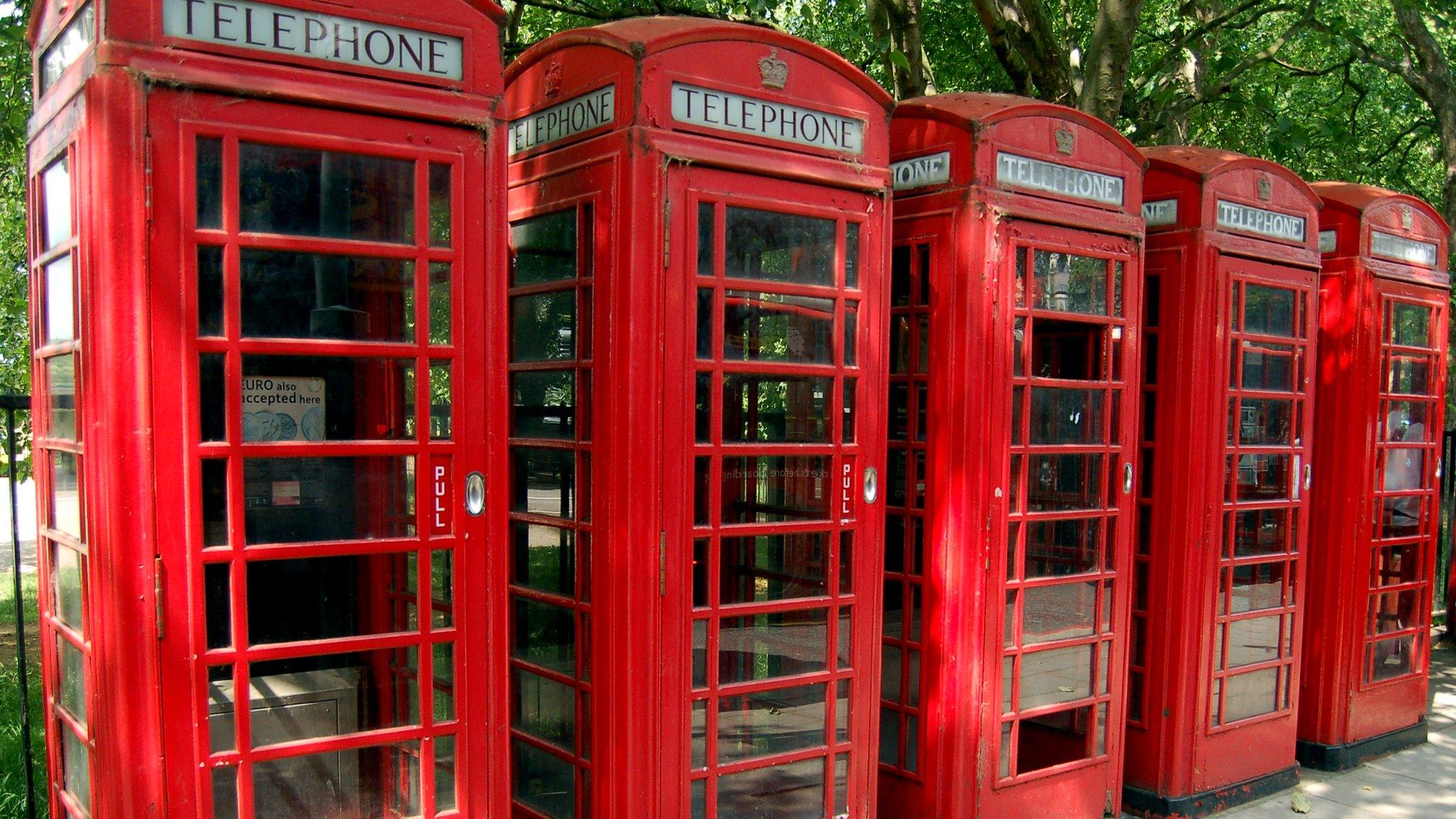Why do people buy old telephone boxes?
- Published

Michelle Spill supported her husband's dream of owning a red phone box
As soon as the red phone box arrived at Steve and Michelle Spill's house, it had captured people's attention.
"There's only love for it. From the moment it was in our drive, the postman, delivery men, everyone was commenting on it," says Steve, 51, who lives in Worcester and works for a fire alarm company.
"The neighbours love it - at least they tell me they do."
After 10 years of wanting one of the iconic red kiosks, he managed to secure it for £1,500 in September.
It was something of a bargain. The oldest red phone boxes can sell for upwards of £15,000 when fully restored.
From Germany to Japan, collectors buy the disused phone booths and either restore them or create new uses, from cocktail cabinets to secret entrances to a child's playroom.
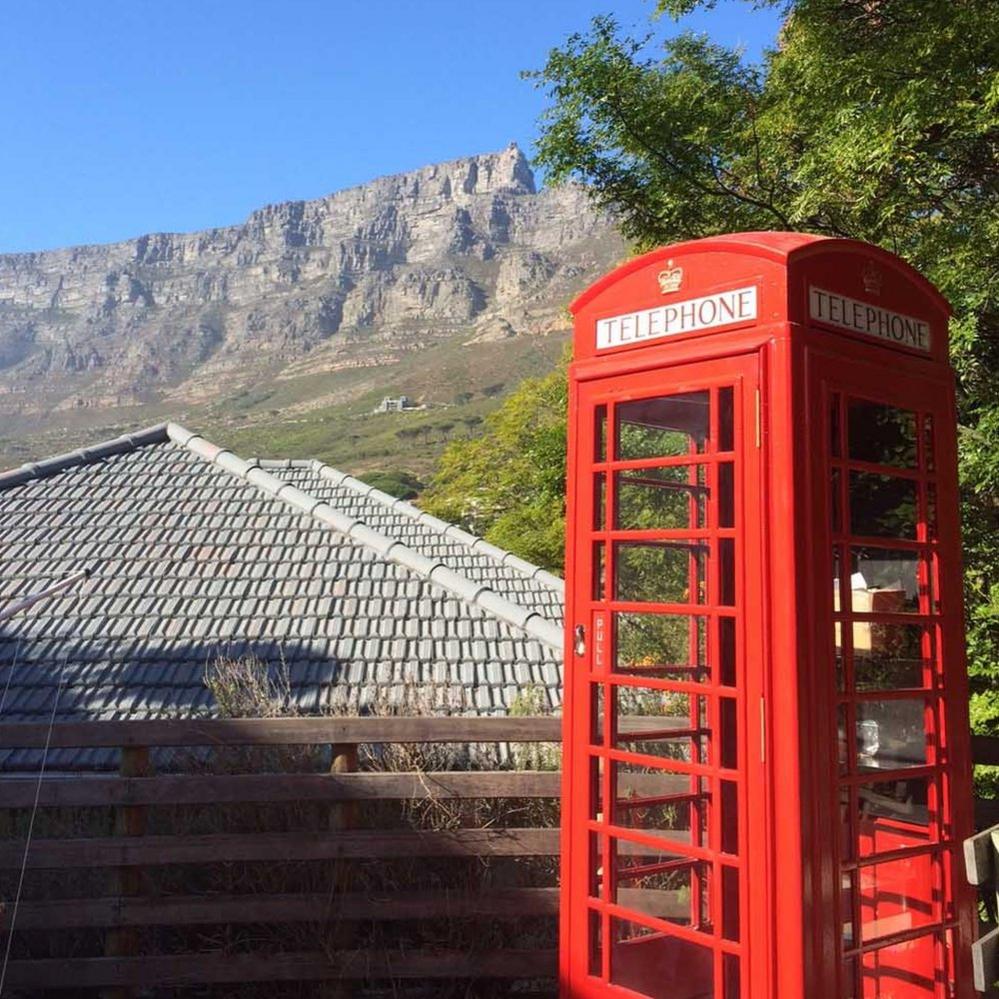
The kiosks are sold to collectors all around the world - like this one in Cape Town, South Africa

Emmendingen in Germany received one from its twin town of Newark in Nottinghamshire, where many of the boxes are restored

A US collector used a dismantled kiosk as the secret entrance to a child's playroom
Premier League footballers and rock musicians are also among the buyers. Sharon Osbourne even bought a black phone box that once stood near the Tower of London for husband Ozzy.
On the streets, the spread of mobile phones has left phone boxes in terminal decline. BT is consulting on plans to decommission another 14,000, although most of them will be the more modern stainless steel boxes because many red booths are protected.
With thousands listed as architecturally significant structures, sellers say that demand still outstrips supply.
'Quintessentially British'
The most common type of red kiosk - designed by Battersea Power Station architect, Sir Giles Gilbert Scott, and known by aficionados as the K6 - turned 80 in October, external.
"There are certain objects that people see as quintessentially British. The red phone box is certainly one of them," says Hamish Wood, who works at the National Telephone Kiosk Collection at Avoncroft Museum.
They were ubiquitous for decades, and for many people are as recognisable as London's Tower Bridge, he says.
Steve agrees they're a valuable item. "The K6 was only ever built to last 50 years," he says. "I started thinking they're becoming more and more of a collector's item and prices are being driven up."
Yet when it arrived, there was a problem. The phone box, which weighs 750kg - almost twice as heavy as an Aga cooker - had to be lifted over the house into the garden.
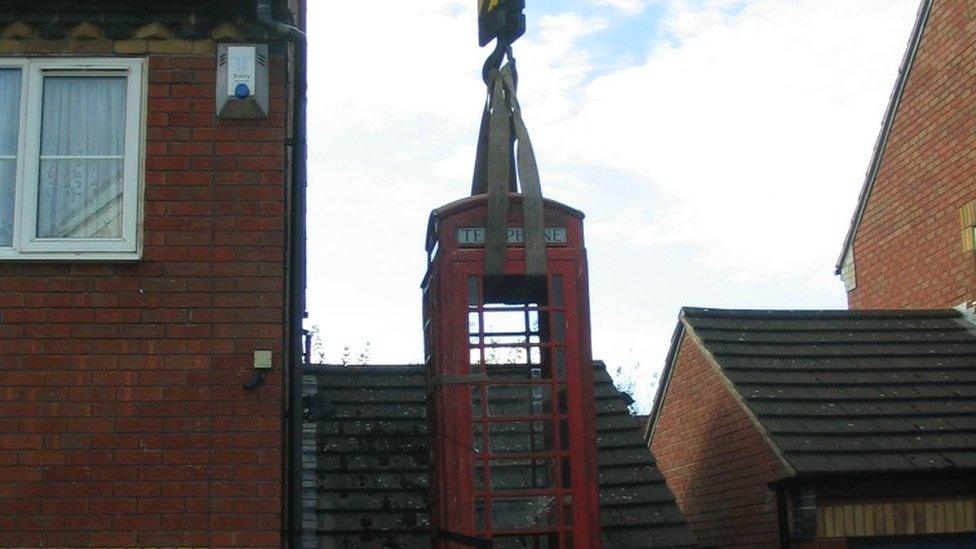
A crane was needed to move Steve's phone box, which, like most K6s, has cast-iron doors
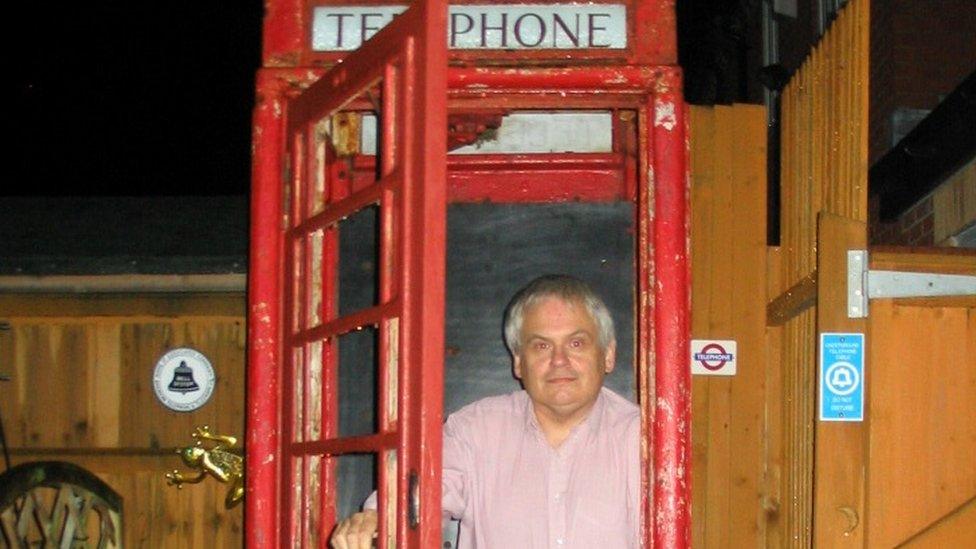
Steve Spill says there's a lot of nostalgia for the red phone booth
The kiosk itself was £850 because of its dilapidated condition, but hiring the crane operator cost £650. "It's the quickest £650 I've ever spent."
It was worth it, he says. Visitors are so keen to see it that they don't take their jackets off, they go straight to the garden.
Most of the second-hand phone boxes are now used as garden features, according to Richard Parker, managing director of X2Connect, which works with BT to refurbish and sell discontinued phone boxes.
Among some of the wackier reports are of a box being re-purposed as a poolside shower in Sydney or as a lift down to someone's wine cellar.
"A Swedish company purchased two of them for staff to use for private mobile calls. It was going back to the old use," Mr Parker says.

Two K6s were welded together to create an extra high phone box outside the old telephone exchange in Maida Vale
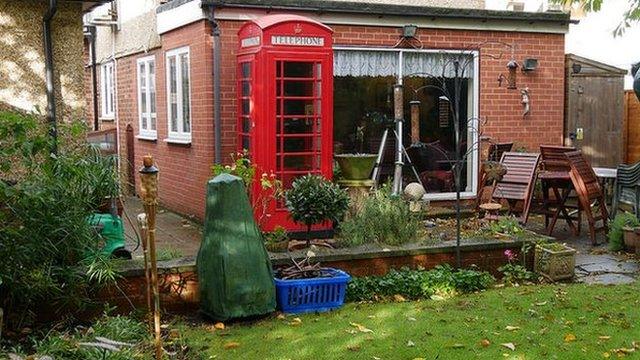
The second-hand booths often end up in people's gardens - like this one in Kent
The exact number of second-hand K6s in circulation is uncertain, but sellers say it's only a small percentage of the 60,000 on the streets at their peak.
People buy them for their appeal as a "design icon", but also for the nostalgia, says Christian Lewis, restorations manager at Unicorn Restorations, a major seller of the boxes.
"We have had customers purchase telephone boxes or particular types of payphones as they reminded them of making calls to their girlfriend, who is now their wife," he says.
Some older customers hear the "ticking" sound of the old coin box and are taken back to their childhood, he adds.
They were "landmarks", agrees Steve, who grew up in Birmingham. "You would meet your friends there, or shelter from the rain in one of them. When I was a teenager, that was our mobile phone."
But it's unlikely the thousands of steel and glass boxes left increasingly obsolete by mobiles will capture the imagination of collectors in the same way.
"I doubt people will get so sentimental over a modern payphone," Mr Lewis says.
- Published13 December 2016
- Published16 February 2016
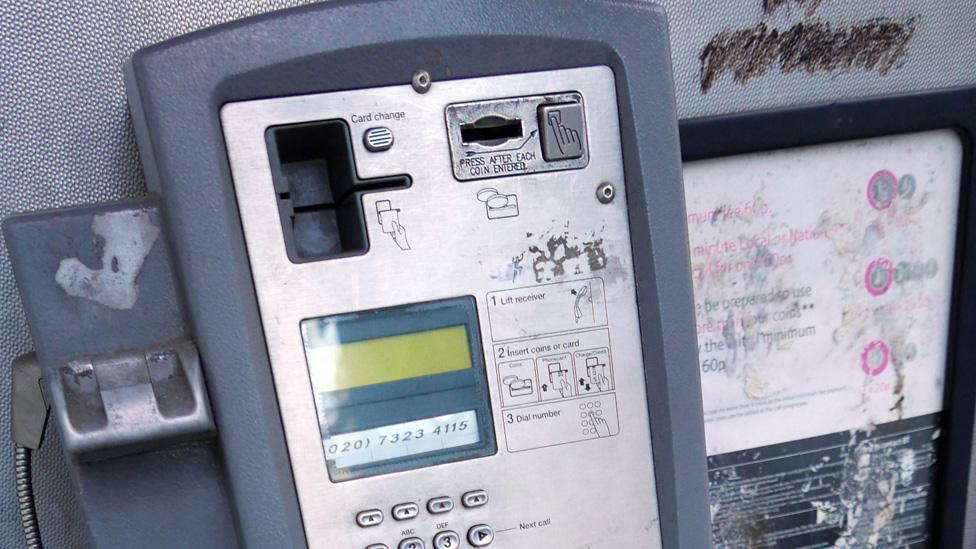
- Published24 April 2015
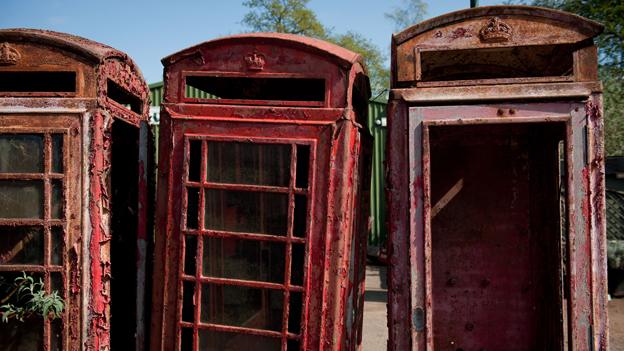
- Published15 June 2013
